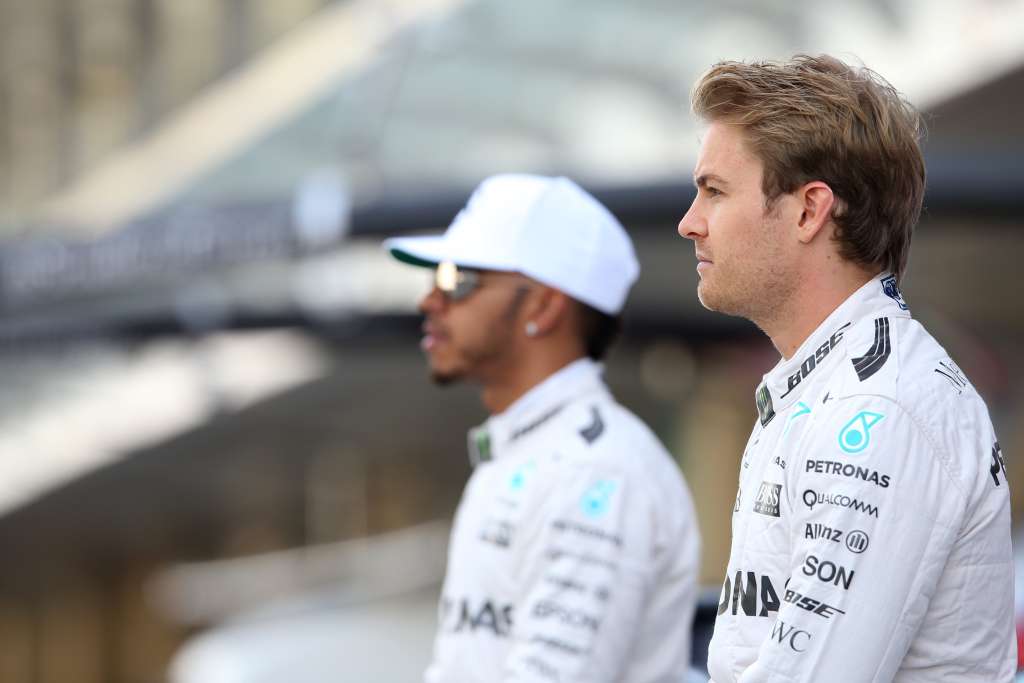Racing against the same drivers week after week, in a high-octane sport like Formula 1 – is bound to produce rivalries.
Whether it’s old friends battling on track to teammates pushing each other to the limit, rivalries have generated some of the stories that have defined Formula 1.
As we see another rivalry come to fruition in 2021, with Max Verstappen emerging as the number one challenger to Lewis Hamilton’s dominance – we take a look back at some of the great rivalries the sport has seen, and some of the key moments that have defined them.
Five fiercest Formula 1 rivalries
James Hunt and Niki Lauda
While on track Niki Lauda and James Hunt were fierce rivals, it’s worth noting away from racing the pair were good friends. The duo were close from their Formula Three days, when they would travel around London. There are even stories of Lauda kipping on Hunt’s sofa in London.
But there was no love lost on track. Between them, the pair dominated the 1975 – 1977 Formula 1 seasons. With Ferrari, Lauda took the 1975 championship, with Hunt an impressive fourth for Hesketh. But when the British racer made the move to McLaren, the rivalry intensified. The pair went toe to toe and were in a league of their own for much of the season, but it was a year of two halves. The scoring system meant a drivers’ best seven results from the first eight races were combined with the best seven results from the last eight races.
The season began with Lauda taking victory at four races, with two 2nd and one 3rd placed finish, and retiring from the French Grand Prix. And while Hunt took victory in Spain and France, he retired from half of the first eight races. But the season took a turn when Niki Lauda suffered near-fatal injuries at the German Grand Prix. He would miss the next two races, but miraculously raced the final four, taking a 3rd place in the penultimate race. Hunt took four victories during Lauda’s absence, and would go on to win the championship by a solitary point. Lauda still finished second.
A battle so intense, it was dramatized for the Hollywood film Rush, but the story was far from over. Lauda recovered the following year and regained the drivers’ championship, while Hunt finished a lowly 5th.
Nigel Mansell and Nelson Piquet
In 1986, Nelson Piquet joined British driver Nigel Mansell at Williams as the team looked to build on its 3rd place finish the year before and return to its former glories. They had two of the best drivers on the grid, but sparks would begin to fly between them.
Williams took the Constructors’ Championship in ’86, with Mansell and Piquet finishing 2nd and 3rd respectively. Mansell was agonisingly close to taking the drivers’ title, but for an exploding tyre at the very final race in Adelaide. He retired, and finished a mere two points behind Prost.
But the following year, both drivers wanted more. Mansell won six races to Piquet’s three, and generated an all-time great F1 moment. Powering down the Hangar Straight, Mansell sold Piquet a beautiful dummy. A slight turn left sent Piquet to defend, while Mansell veered right to the inside of the corner to take the lead. The home crowd erupted, as Mansell was just a point behind leader Senna in the standings.
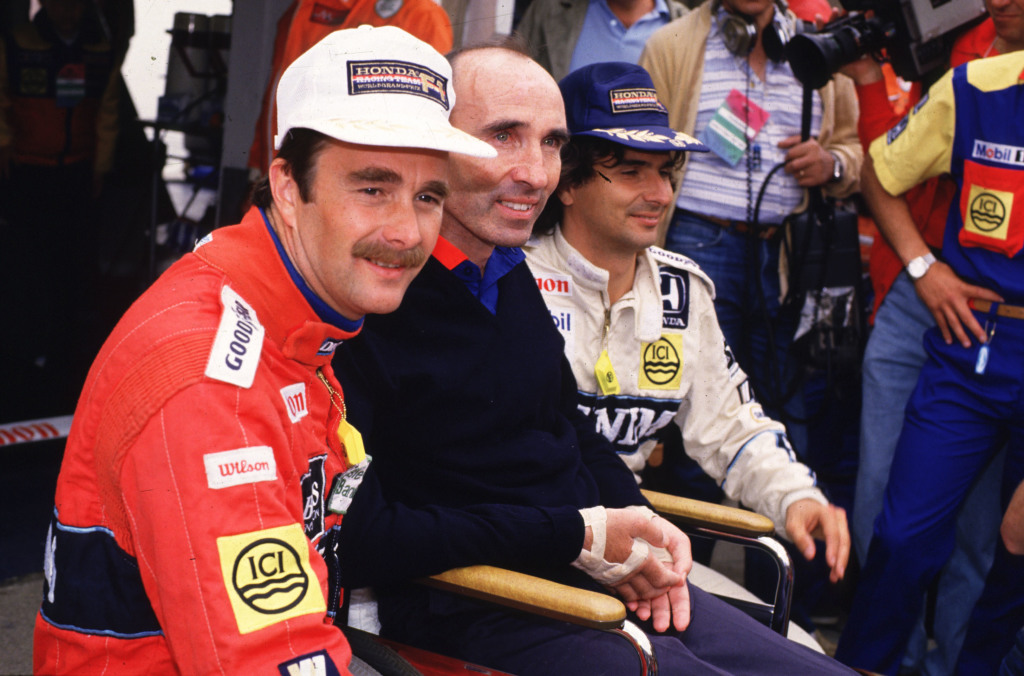
Image copyright: Motorsport Images
But while Mansell scored the most wins, Piquet was the more consistent driver. Eight additional podiums including seven 2nd places put Piquet on course for his third drivers’ championship.
After ’87, Piquet joined Lotus, while Mansell had a disastrous year with Williams. He’d leave to join Ferrari, but when he returned to the Grove outfit in ’91 it was a far more successful affair. A second place was followed by his first-ever World Championship in 1992, over a decade after his debut on the grid.
Mark Webber and Sebastian Vettel
When Red Bull Racing really hit its stride in the early 2010s, they were helped by the fact they had two of the best talents on the grid. Mark Webber, an experienced racer, and Sebastian Vettel, F1’s next big thing.
But on track, this Ying-Yang pairing did not always work in perfect harmony. Their first real battle came in Turkey in 2010. Approaching turn 12 in Istanbul, the Red Bulls collided. Vettel looked squeeze through a gap, but veered into his teammate. While the commentators were placing blame on Vettel, the German swirled his finger by his head, implying Webber was crazy.
Webber would play second fiddle to Vettel’s three championship-winning drives, and in 2013, his frustration came to a head. During the Malaysian Grand Prix, Webber led Vettel with the team sitting comfortably in 1-2. The pit wall issued the infamous “Multi-map 21” order for Vettel to stay put behind his teammate. He did not oblige.
With 13 laps to go, Sebastian set out on the attack of Webber and overtook his teammate. “This is silly, Seb”, was the call from team boss Christian Horner. And things got heated after the race, as the Webber accused Vettel of breaking team orders. Their relationship would not be the same, and Webber retired from the sport at the end of the season.
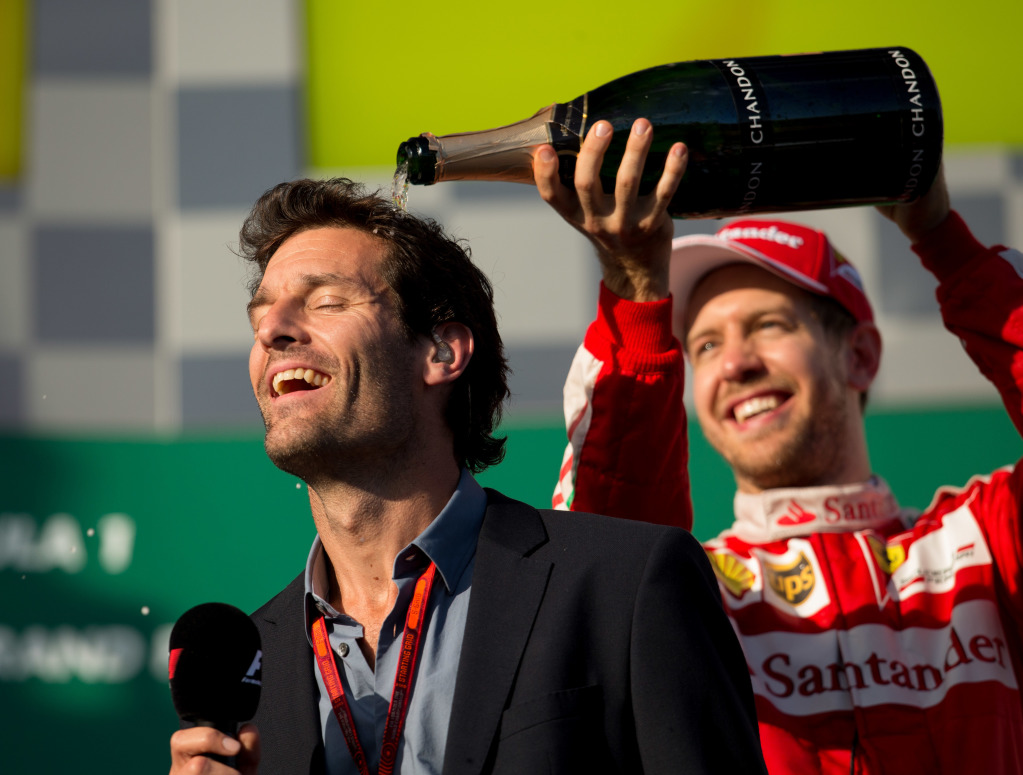
Copyright: Motorsport Images
Lewis Hamilton and Nico Rosberg
The turbo-hybrid era has been dominated by one team: Mercedes. Their seven consecutive world titles are an unrivalled achievement in the sport. But it didn’t come easy.
When Lewis Hamilton made the switch the join Mercedes, he would combine with good friend Nico Rosberg. The pair came through the karting ranks together, and celebrated when Rosberg scored his first podium But soon, the relationship would turn sour.
The Silver Arrows had a tight battle in 2014. A crash in Belgium saw Rosberg criticised for smacking Hamilton into Les Combes. The battle went down to the final race, and Hamilton prevailed as Rosberg’s car was plagued by mechanical issues.
But it was in 2016 when things really heated up. There were only two races the Mercedes did not win, and the first in Spain was the most contentious. Rosberg took the lead from Hamilton into turn one, something he didn’t take too lightly. Fighting back to regain the place, Rosberg swerved over to defend his position, pushing Hamilton onto the grass. The Brit span, and collected his teammate in the process leaving both Mercs stranded in the kitty litter. It was the sign of a souring relationship between the two, which saw wars of words as well as battles on track.
The season concluded with Rosberg taking the title, and that was enough for him. Later that year, at the prize-giving, Rosberg announced his retirement. He’d accomplished his dreams, and that was enough for him.
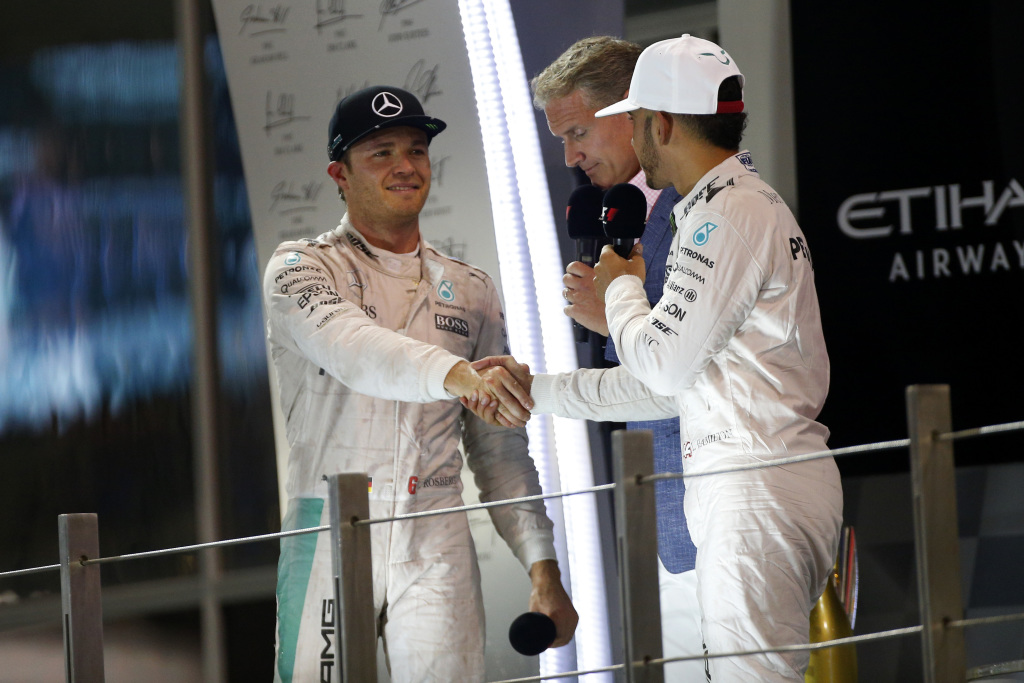
Copyright: Motorsport Images
Ayrton Senna and Alain Prost
When Senna joined McLaren in 1988, it was thought he’d play a supporting role to his teammate Alain Prost. And while the team dominated the races – winning all but one – it was the Brazilian who shone.
And there were signs of tension developing. Prost felt engine supplier Honda was giving Senna preferential treatment after they had collaborated the season previous at Lotus. This was confirmed, when Honda revealed their power unit aligned with Senna’s aggressive driving style. This saw Senna take 13 pole positions, and convert 8 race wins during the season, to take his first title.
Prost may have hoped for a less tumultuous season the next year, but that was not the case. At Imola, Prost was furious after the pair agreed whoever led off the line would not be challenged for the position. When the race restarted, Prost took Senna into the first corner, but his teammate was in hot pursuit of the Frenchman and reclaimed the position later in the lap. Prost was furious, Senna claimed he had made no such agreement, and cracks were certainly beginning to show.
At the mid-point of the season, Prost announced he was off to Ferrari. He cited “a person” being the reason for his move, rather than tension with Honda or McLaren.
As the season ploughed on, Ayrton Senna found himself needing to win the final two races, beginning with Suzuka. He’d taken pole, but Prost took the lead off the line and dominated. But Senna chased him down on a new set of fresh rubber.
He pushed Prost to the limit and tried a move at the final chicane. He pulled to the inside, and Prost turned in on his teammate. It looked as if Prost had taken the championship by crashing into his closest rival, but Senna got going again and won the race. His title hopes were still alive – or so he thought. Senna was later disqualified from the race, and a long legal battle overshadowed a fierce and entertaining rivalry.
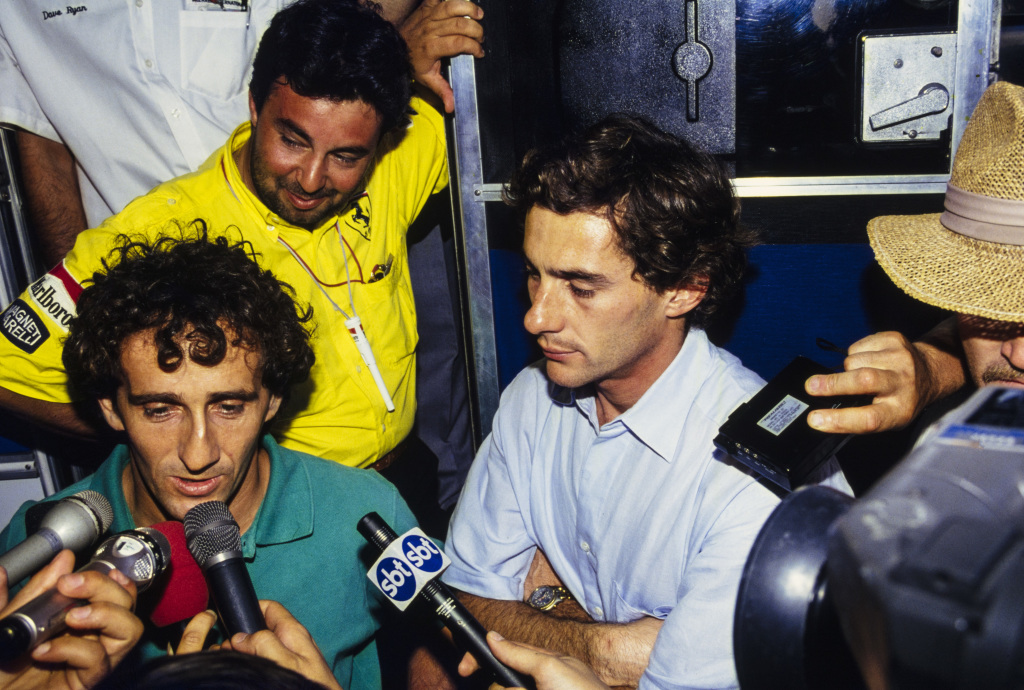
Copyright: Motorsport Images
That rivalry would continue as the pair raced for different teams. In 1990, when Prost had joined Ferrari, the Italian outfit put up a fight against the dominant McLaren. Once again, the title battle came down to Suzuka in the third year the pair would fight for the championship.
Prost took pole, but complained the inside line of the 2nd place box had better grip. He vowed to go “whatever it takes” to take the lead. As predicted, Prost did jump Senna at the start, and true to his word, Senna dived down the inside of the Ferrari. In taking both cars out of the race, Senna secured the 1990 title.
